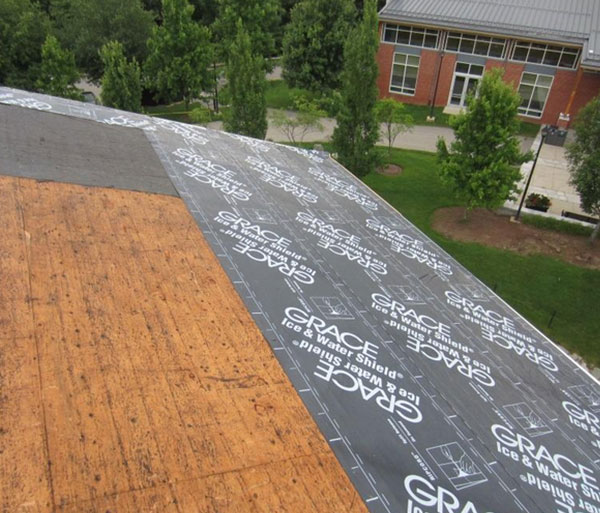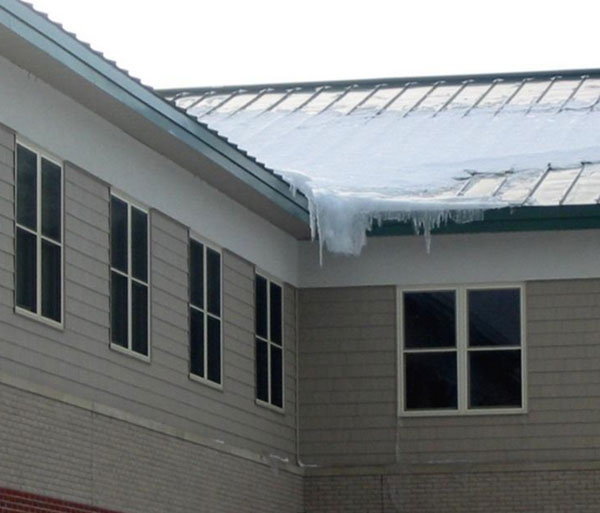Ice Dams: Underlayment and Metal Roofs Can Protect Against Problems
Membrane underlayment is an effective way to control leaks associated with ice dams when installed correctly at critical areas (e.g., eaves, valleys, and dormer rising walls). Membrane underlayment generally consists of self-adhered rubberized asphalt and polyethylene membranes installed on the roof deck/sheathing, below the primary roofing materials. Membrane underlayment on sloped roofs controls the leakage associated with ice dams; it does not prevent ice dams from forming.
Membrane ice dam protection is easily incorporated into new construction and reroofing projects. It can be incorporated into existing roof construction with localized roofing removal and replacement near the eave.
Current building codes require membrane underlayment at roof eaves and valleys below most steep roofing materials in cold regions. At eaves, building codes require the membrane to extend at least 2 feet upslope from the exterior wall. Some conditions (e.g., low roof slope and climate) necessitate extending the membrane further upslope. The membrane must be turned up at dormers and side walls to the same height as the top edge of membrane installed on the roof; otherwise, leakage can occur.
As mentioned in the section on ventilated roofs, certain roof geometries are prone to large ice build-ups; the membrane must be extended up higher in these areas. Valleys also tend to collect large volumes of snow and ice and must also be protected by membrane underlayment.
Be aware that large or repeated ice dams can damage the primary roofing. Ice expansion can loosen roofing and flashing attachments, exposing fastener holes in the membrane underlayment. Exposed fastener holes allow meltwater to leak into buildings.
Metal roofing is popular in many snowy areas and is effective at eliminating the source of meltwater that causes ice dams by allowing the snow to slide off the roof. Metal roofs do not control heat loss through the roof. Metal roofs can be installed on the entire roof slope or limited to “aprons” at the lower part of the roof near the eave. In the latter case, aprons must extend high enough to be effective. This typically means extending aprons upslope of the exterior wall.
Metal roofs must be designed and oriented to direct sliding snow to safe areas (i.e., away from doorways, sidewalks, and driveways). Snow guards mitigate the hazard of falling snow and ice, but negate the benefit of allowing snow to slide off the roof. Snow guards can contribute to ice dam formation.
Though not required by current codes, it is good practice to install membrane underlayment below standing seam roofs to prevent leakage should ice dams occur.
In snow country, steep roofs commonly do not have gutters in order to avoid trapping and accumulating snow and ice at the eave. Alternative methods of managing roof runoff must be implemented where gutters are removed or omitted from buildings.
Metal roofs are more expensive than asphalt shingle roofs and can be noisy during rainstorms and hail. Complicated geometry requires skilled workers to install soldered flashings to prevent reliance on sealants.
Related Topics:

















